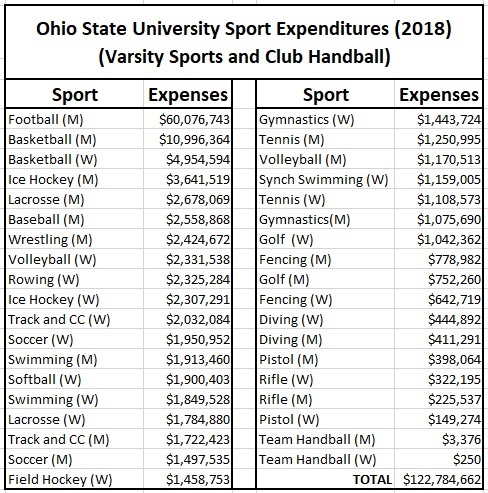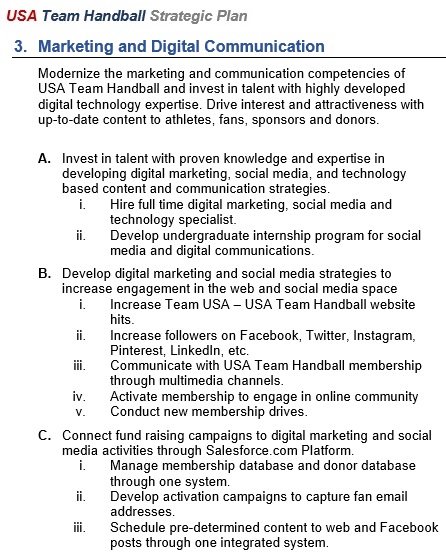
Yesterday, the IHF nominated the U.S. to participate in the 2021 IHF World Men’s Handball Championship as the North American & Caribbean Handball Confederation (NACHC). It didn’t take long for a firestorm of protest to emerge pointing out that this wasn’t deserved and that Greenland should have been selected instead. It was very predictable and on the surface it seems pretty unfair. If one digs deeper, however, one can also conclude that it was clearly the right decision.
Establishing some Bonafides
For the record, I’m an American and former U.S. National Team player. I bleed red, white & blue and, of course, one could consider me as ridiculously biased. How could I possibly be objective here?
Well, let’s take a trip down memory lane to the 2006-2007 timeframe when Greenland was unceremoniously removed from the Pan American Team Handball Federation (PATHF) for essentially being too good. (And, yes, I regret to say that my own nation was part of those machinations.) Why, on two occasions (2002, 2006) Greenland beat the U.S. to secure World Championship spots. The 2006 defeat was a real bummer because I was living in Europe and looking forward to covering the U.S. at the 2007 World Championships in Germany.
Instead, I got to watch Greenland play instead. As you can see and hear from this 2007 article/podcast I became a pretty big fan. For sure it was very obvious that the whining I had heard in the states that Greenland’s team was just a bunch of Danish mercenaries, was totally hogwash. This was a legit team with real fans that were proudly Greenlanders. That’s why I was outraged when Greenland was kicked out of PATHF and used my soap box to lobby for their reinstatement. Whether this little website played any role is debatable, but thankfully the IHF forced PATHF to reinstate Greenland.
13 years later I still am a big proponent of Greenland handball. In 2018, I watched Greenland almost pull off a big upset over Chile on home soil to secure a 2019 WC slot. What a match and atmosphere! Check out this interview with Minik Dahl Hoegh regarding that match and handball in Greenland.
Anyway… If all this doesn’t convince you I can be objective… Nothing will. Moving on.
The IHF Role: They Decide and There’s No Established Criteria
So, why is the IHF making this decision? Well, due to the COVID-19 and probably the limited budgets of the nations involved it became impossible to hold a NACHC Championship. And, let’s be absolutely clear here:
No one. I repeat no one. Is happy that no championship could be held to decide a winner on the court. No one.
So no championship. How is this resolved? Does one turn to the NACHC regulations to see what it says under force majeure? No… not even if such regulations exist. As the IHF announcement points out, the applicable regulation is IHF Competitions, Section 2.8, World Championships: Non Appearance which states in part:
“If a Continental Confederation does not use its performance or compulsory places, the IHF Executive Committee shall decide on the reallocation of such places.”
So, with no championship being held, technically, the IHF didn’t even have to give this World Championship slot to a NACHC nation. They could have decided (as some have suggested in social media) given this slot to North Macedonia.
IHF Rationale for Selecting the U.S.
So, basically this was a free ticket for the IHF with no actual requirements dictating a solution. The IHF, however, provided some rationale, which I mostly agree with. That rationale is listed below:
- USA are a very important handball nation for the worldwide handball development;
- In view of the size of the population, a specific strategy was developed to accelerate the progress of handball in USA, aiming to grow the IHF’s TV audience worldwide and increase the social network impact of handball, which will help to maintain the status of handball in the Olympic system and ensure the future of handball at the Olympic Games;
- The former Pan American continent was split in order to increase the number of handball activities and offer the countries in NACHC better chances to reach IHF major events. A special focus was placed from the very beginning on the USA being a major market.
- An agreement with major TV broadcasters in the USA has been made to show handball matches.
- As Los Angeles, USA is hosting the 2028 Olympic Games, having strong host teams should be an overall target;
- From those teams that have registered for the planned qualification event and showed interest in playing the qualification (Canada, Greenland, Puerto Rico, USA), USA are the best-ranked team at the last official competition, namely the 2019 Pan American Games.
The first five sets of rationale listed all relate to U.S. development and growing the U.S. market. Strictly from a business standpoint it’s hard to find fault with this rationale. And, make no mistake, the IHF is a business. Honestly, after years of shaking my fist in frustration at the lack of effort to develop a U.S. market, it’s refreshing to see criteria I’ve championed before being listed as reasons to give the U.S. an opportunity on the world stage. To promote the sport in this country.
A Rising Tide Lifts all Boats
It’s also worth noting that what’s good for USA Team Handball is also good for handball, in general, both in North America and the World. I get how the other nations of the NACHC might be resentful of the economic weight of the U.S. dictating this decision. Even if it is a unique, one off decision that’s only be made due to a global pandemic it still can leave a bad taste in one’s mouth.
But, make no mistake if the U.S. becomes a handball nation it will help everybody, much the same way the U.S. development as a soccer nation has helped the development of the CONCACAF. Yes, the CONCACAF isn’t UEFA, but make no mistake the U.S. caring about soccer now means some big paychecks for that organization. Big paychecks that have trickled down to all the CONCACAF nations.
Could the same thing happen with the NACHC? Yes, it could. Nicer competitions with a crowd and a TV contract. The U.S., Cuba, Canada, Greenland and others battling on the court for a WC slot in a nice arena in front of cheering fans.
So that’s the business case, but there’s actually a pretty solid case to be made that the U.S. is also the better team on the court. In Part 2, I’ll take a deep dive to explain why I think that is also true.


























